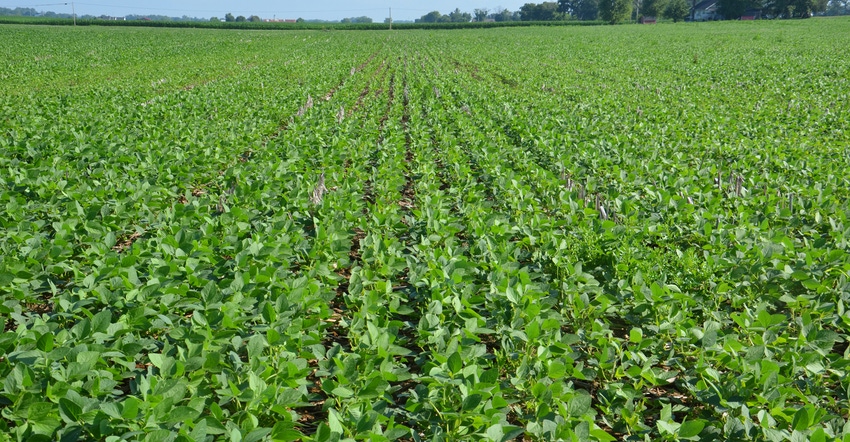July 2, 2020

There are several key factors driving potential changes in farmland values. They include cash rent, working capital, supply of land, interest rates, inflation, and investment potential of farmland compared to other investments such as the stock market, corporate bonds or similar assets.
The first two — cash rents and working capital — are creating downward pressure on land values. The remaining factors — supply of land, interest rates, inflation and investment potential — represent positive influences.
Negative pressure on land values
Cash rent is primarily driven by net returns to land. Using a case farm in west-central Indiana, net return to land has averaged about $237 per acre since 2007. During this time period, cash rent in west-central Indiana for average-productivity soil has averaged $229 per acre.
Over the long run, we would expect the average net return to land and cash rent to be similar. Since 2014, they haven’t been similar. From 2014 to 2019, net return to land and cash rent for the case farm averaged $185 and $256, respectively. In response to this divergence in values, cash rent declined about 17% from 2014 to 2019.
Projected net return to land for 2020 is about $125 per acre compared to a projected cash rent of $240 per acre, suggesting that further downward adjustments in cash rent may be needed.
Working capital is an important source of funds when making down payments on farmland. Working capital per acre for most farms has declined substantially since its recent peak in 2014. This decline has reduced farmers’ ability to purchase farmland. However, there are farms that still have solid working capital positions. Though working capital is used for other items, farms with solid working capital ratios are in a good position to bid on farmland.
Positive factors in farmland market
The farmland market is often considered to be a very thin market, meaning that at any particular time, the supply of farmland on the market represents a very small percent of total farmland. Anecdotal evidence indicates this is particularly true this year.
Farmland is also considered to be a good hedge against inflation. Recent Federal Reserve policies in response to the COVID-19 pandemic could potentially put upward pressure on inflation rates.
Because of its low correlation to stock market returns, farmland is also attractive to institutional investors.
Long-term interest rates or capitalization rates are a major factor impacting land values. The capitalization rate depends on the long-term rate on U.S. treasuries, inflation, and the risk premium between long-term interest rate for land and long-term rate on U.S. treasuries. If any of these factors increase or decrease, the interest rate on farmland is likely to increase or decrease.
Though inflation and the risk premium could increase, the long-term rate on U.S. treasuries remains at historical lows, subsequently providing support to farmland values. Note that one of the primary reasons for the large increase in land values from 2006 to 2014 was declining interest rates.
So, even though net return to land for farm operators and working capital are relatively low, there are other factors helping support current land values. Primarily, historically low interest rates and limited supply of farmland may create a situation in which there is downward pressure on cash rents, but stable land values across Indiana.
Langemeier is a Purdue University Extension agricultural economist and associate director of the Purdue Center for Commercial Agriculture.
About the Author(s)
You May Also Like






